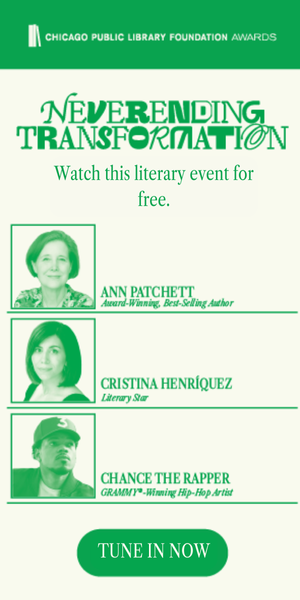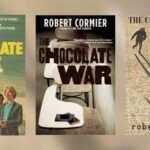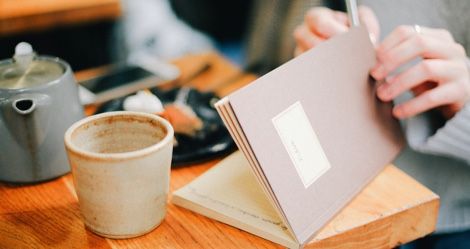
30 Tiny Lessons from 30 Memoirs
During the past year, I spent a lot of time reading memoirs and essay collections. It’s always a privilege to be able to slide on someone’s thoughts. Reading memoirs and essays is an act of empathy and an act of stretching. What will we learn from people who sometimes feel like siblings and sometimes feel like strangers? No matter what we learn, we will leave each book changed.
When writing this list, I struggled with how I should organize each book. I could have arranged them by publication date. I could have ranked them in order by how much I liked them. Each book could have also been categorized by subject or whether or not they were essays or an entire memoir. However, none of these examples really rang true.
So, dear reader, what you have now is my list of memoirs. In order by when I started reading them in January to the very last one on the very last day in November. Underneath is a tiny lesson that I learned from each book.
1. Theft by Finding: Diaries 1977-2002 by David Sedaris (2017)
Lesson: We all struggle and struggling is the deep dirty secret most people have.
2. Saving Tarboo Creek: One Family’s Quest to Heal the Land by Scott Freeman (2018)
Lesson: We as human beings are as capable of repair as we are destruction. Don’t lose heart; beauty is often found in the healing itself.
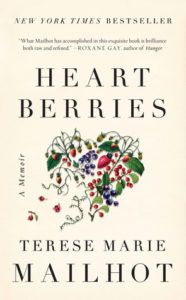 3. Heart Berries: A Memoir by Terese Marie Mailhot (2018)
3. Heart Berries: A Memoir by Terese Marie Mailhot (2018)
Lesson: Be honest, stay true to yourself, defy the taboo, the conventional, and the lane you are supposed to stay in. Even Lyric and experimental prose can leave us ragged and make the New York Times bestseller list.
4. A House of My Own: Stories from My Life by Sandra Cisneros (2015)
Lesson: Home is a complicated place, to be a writer is to be blessed with a fierce and singular stubbornness, and dogs are a must.
5. Saddled: How a Spirited Horse Reined Me in and Set Me Free by Susan Richards (2010)
Lesson: Addiction doesn’t discriminate, it is a vulnerability, and recovering from it is as remarkable as the fact that we can climb on the back of an animal like a horse and ride it as it canters through a field.
6. The Chronology of Water by Lidia Yuknavitch (2011)
Lesson: The truth is often more brutal than any fiction we can muster. Abuse and abusers lose their teeth when we call them by their names. Sentences are our playthings, twist them around for effect.
7. My Beloved World by Supreme Court Justice Sonia Sotomayor (2013)
Lesson: Being yourself can be a radical force that can change the world. Heck, it made Sonia Sotomayor a Supreme Court Justice.
8. Crazy Brave by Joy Harjo (2012)
Lesson: “I understand why women went back to their abusers. The monster was a bad dream – an alien of sorts – who invaded the spirit of your beloved one. He entered and left your husband. It was your real love you welcomed back in.”
This book is beautiful, and this sentence has haunted me since. It is a line that has made it easier to be kind to those I love caught in maddening spinning cycles.
9. The Reason for Hope: A Spiritual Journey by Jane Goodall (1998)
Lesson: Animals are often the key to our humanity. Horses, monkeys, dogs and birds, wild things and tame, to lose our connection with them is to lose our connection to ourselves.
 10. How to Write an Autobiographical Novel: Essays by Alexander Chee (2018)
10. How to Write an Autobiographical Novel: Essays by Alexander Chee (2018)
Lesson: A good sentence can slice a reader apart, another good sentence next to it can stitch the reader back together again. Sharpen, sharpen, sharpen. To choose to be a writer is in itself an act of rebellion.
11. Becoming Wise: An Inquiry into the Mystery and Art of Living by Krista Tippet (2016)
Lesson: Being spiritual doesn’t mean sacrificing skepticism and curiosity instead it means enjoying a deep and profound sense of wonder and awe.
12. Feel Free: Essays by Zadie Smith (2018)
Lesson: The strength of a country’s embrace of freedom is defined by its ability to support, encourage, and listen to its artists, thinkers, and critics. It is also patriotic to fight for that freedom. Lastly, Key and Peele are creative geniuses.
13. The Wrong Way to Save a Life by Megan Stielstra (2017)
Lesson: The wars raging inside of academia are often a reflection of how the rest of America distributes power and values knowledge, so pay attention. Sometimes you need to get bloody to find the right way to say something.
14. Rough Beauty: Forty Seasons of Mountain Living by Karen Auvien
Lesson: Be it fire, flood, money, or men, we must fight for the beautiful spaces in the world that mend us. This book reminded me of the magic of mountains and good dogs.
15. The Book of My Lives by Aleksandar Hemon (2013)
Lesson: Sentences as clear, poignant, and deceptively simple as the ones in this book are a marvel. This book taught me that everything from crappy landlords, to shattering loss, to pick-up games of soccer, to dogs that remind us of impending danger can all yield good writing.
16. Horses Never Lie About Love: The Heartwarming Story of a Remarkable Horse Who Changed the World Around Her by Jana Harris (2011)
Lesson: Poets, too, can own, breed, and train nice horses. Dreams are possible.
17. Landmarks by Robert MacFarlane (2015)
Lesson: To help save the natural world, we must also remember the language we used to talk about it. Words connect us to nature. We cannot mourn the loss or fight to protect things with which we never gave a name.
18. Walking to Listen: 4,000 Miles Across America, One Story at a Time by Andrew Forsthoefel (2017)
Lesson: Sometimes one of the best gifts you can give is to listen without judgment. This simple act will often see people opening up their hearts and their homes, in ways we could never imagine.
19. The Clothing of Books by Jhumpa Lahiri (2016)
Lesson: Our clothes and our book jackets are often a reflection of what culture expects of us. It is our meat and our pages that reveal our souls.
20. A Dream Called Home: A Memoir by Reyna Grande (2018)
Lesson: Diverse books are often the flint that lights the fire of curiosity. For a writer, clear-slightness can be a powerful weapon.
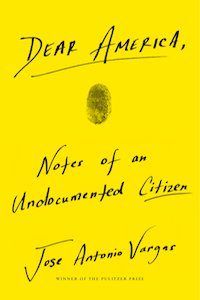 21. Dear America: Notes of an Undocumented Immigrant by Jose Antonio Vargas (2018)
21. Dear America: Notes of an Undocumented Immigrant by Jose Antonio Vargas (2018)
Lesson: I have often wondered, what greatness would be accomplished if the undocumented artists and amazing individuals like Jose Antonio Vargas, were simply given their citizenship. Even though I can’t quantify it, I do know that beauty, and compelling writing defies papers and borders.
22. Heartland: A Memoir of Working Hard and Being Broke in The Richest Country on Earth by Sarah Smarsh (2018)
Lesson: If we are to start creating a country that is whole and well and beautiful as its landscapes and its people, we must learn to care for the people who grow our food, and we must understand that brilliance isn’t just found among the wealthy, but also among those with sore backs and dirty fingernails.
23. H is for Hawk by Helen MacDonald (2014)
Lesson: Animals and curiosity are often the salves for a grieving. However, often the way we talk about animals is deeply rooted in the way we also talk about gender class and colonialism, and examining that changes the way we interact with them as well.
24. First, We Make the Beast Beautiful: A New Journey Through Anxiety by Sarah Wilson (2018)
Lesson: I was leery of this book, at first, I worried that a book about anxiety written by a woman famous for giving up sugar and for once being an editor at a big magazine would drip with judgment. Instead, what I found was honesty, beauty, and insight. Sometimes we have more in common than not, and I too needed to leave my own preconceived notions at the door.
25. Can You Tolerate This? By Ashleigh Young (2018)
Lesson: Be your strange, quirky, self. Whether you are from a town in New Zealand called Te Kuiti, or you fall in love with your chiropractor. What you bring to it will make it a good story.
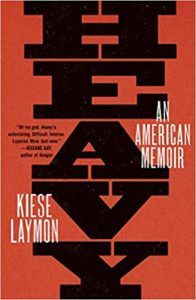 26. Heavy: An American Memoir by Kiese Laymon (2018)
26. Heavy: An American Memoir by Kiese Laymon (2018)
Lesson: The legacy of African slavery and Jim Crow still sits heavy on many Americans. It is crucial that those of us whose ancestors held the keys to the shackles learn to lean into the discomfort, to carry the weight. Also, Kiese Laymon can write. No, really, drop everything and read this book.
27. The Outrun: A Memoir by Amy Liptrot (2018)
Lesson: There is much to be learned from the howling wind, and the roaring sea. It can both tear us apart and put us back together. I may or may not have loved this one so much I read it twice.
28. The Home Place: Memoirs of a Colored Man’s Love Affair with Nature by J. Drew Lahnam (2016)
Lesson: Leave kids in the woods more often; they will come home dirty and tired, but they will be forever marked. A lucky few will also come back with a little wonder.
29. The Grammar of God: A Journey into the Words and World of the Bible by Aviya Kushner (2015)
Lesson: Read more translations; better yet, read different translations of the same work. Often the words the translators use can make as much of a difference as choosing the word “saying” or choosing the word “commandment.”
30. Trace: Memory, History, Race and the American Land by Lauret Savoy (2015)
Lesson: America is a country defined by landscapes. Those landscapes represent freedom, hope, and opportunity for some, while for others they represent violence, erasure, and fear. To find a home among these landscapes, we must learn to see it all.


